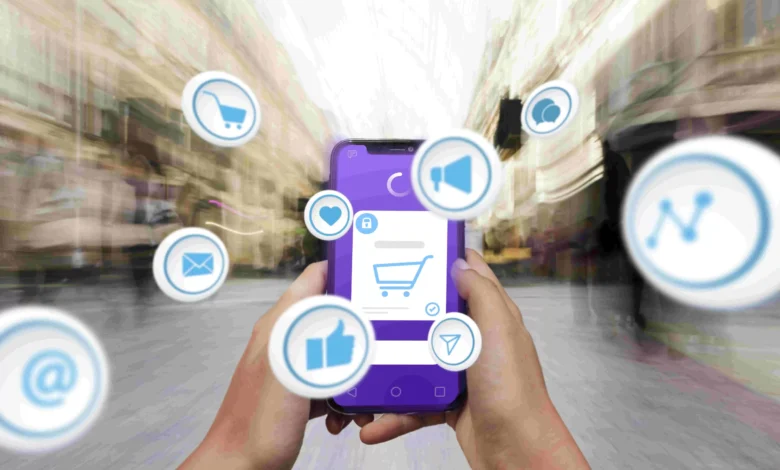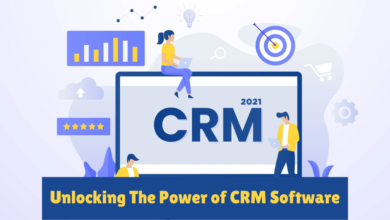How Platform, Design, and Features Impact Ecommerce Mobile App Development Costs

The success of an online business now rests on the implementation of ecommerce mobile apps. They give clients an easy way to shop while they’re on the go, and they provide companies a direct line to customers. Nonetheless, meticulous preparation, financial planning, and wise decision-making are necessary when creating a mobile ecommerce app. Platform selection, feature set, and design complexity are the three most important aspects that can drastically affect the overall ecommerce app development cost. This blog will examine how each of these variables impacts the price of creating a mobile ecommerce app and offer advice on how to make decisions that will save costs.
Choosing the Right Platform: Native vs. Cross-Platform Development
The platform selection is one of the key choices that has a big impact on ecommerce mobile app development expenses. Companies must choose between developing a cross-platform app or creating separate native apps for iOS and Android. Every strategy has advantages, disadvantages, and financial ramifications.
Native Development
The term “native app development” describes the process of making unique applications for each platform, usually Android (using Kotlin or Java) and iOS (using Swift or Objective-C). The best user experience, performance, and access to platform-specific features are offered by native apps.
Pros:
- Superior performance and speed.
- High-quality user interface (UI) and user experience (UX).
- Better access to device features like camera, GPS, and push notifications.
Cons:
- Higher development costs since two separate apps need to be built and maintained.
- Longer development timelines.
Cost Implications: Native apps are generally more expensive to develop because developers need to build two separate codebases. Hiring specialized developers for both iOS and Android adds to the cost. This is especially true for businesses that need to target both platforms from the outset.
Cross-Platform Development
With cross-platform development, developers may produce a single application that functions on both the iOS and Android operating systems. Frameworks like Xamarin, Flutter, and React Native make this possible.
Pros:
- Lower development costs as only one codebase is required.
- Faster time-to-market since developers are building one app for both platforms.
- Easier to maintain and update.
Cons:
- Slightly lower performance compared to native apps.
- Some platform-specific features may not be available or require additional workarounds.
Cost Implications: Cross-platform development can significantly reduce initial development costs, as businesses only need to hire one team to build and maintain a single app for both platforms. However, some added complexity may arise if platform-specific customizations are required, which can increase costs.
Hybrid Apps
Another option is hybrid apps, which are built using web technologies like HTML, CSS, and JavaScript and then wrapped in a native container. Hybrid apps are generally quicker to develop but may not offer the same level of performance or user experience as native or cross-platform apps.
- Pros:
- Lower development cost.
- Fast development time.
- Cons:
- Poor performance compared to native and cross-platform apps.
- Limited access to device features.
- Cost Implications: Hybrid apps offer an affordable option for businesses with a limited budget but can be limiting in the long run, especially if app scalability and performance are critical.
Impact of Design on Development Costs
Another important factor that can have a significant impact on the price of developing an e-commerce mobile app is design. User interface (UI) and user experience (UX) are integral parts of an application’s design, and they both have a big impact on client happiness and retention.
UI and UX Design Complexity
- Simple Design: A minimalist and straightforward design approach often leads to lower development costs. These apps have fewer screens, limited animations, and standard layouts that can be quickly implemented. Simple designs are ideal for apps with basic features and functionalities.
- Custom Design: Custom UI/UX designs are tailored to create a unique, brand-specific experience for users. This often involves complex animations, unique navigation patterns, and detailed user flows. While custom designs help businesses stand out and provide a superior user experience, they also come with a higher price tag due to the additional time and expertise required for development.
Cost Implications:
- Basic Design: Minimalistic designs are less expensive and quicker to develop, making them suitable for startups or businesses with limited budgets.
- Custom Design: Custom designs can significantly increase the overall cost due to the extra time required for creating mockups, wireframes, prototypes, and high-fidelity designs, as well as extensive front-end development.
- Responsive Design: Ensuring the app looks great on various screen sizes (phones, tablets, etc.) adds another layer of complexity and cost.
Design Tools and Prototyping
Before actual production begins, the design team frequently builds prototypes using tools like Figma, Sketch, or Adobe XD. These prototypes assist visualize the app’s user flow, layout, and interactivity. The ultimate cost may vary depending on the complexity and quantity of iterations needed during the prototyping stage.
Animations and Visual Effects
The user experience is improved by animations, transitions, and other interactive components, but they also take longer to design. The cost of development increases with the number and complexity of animations.
Features and Functionalities: The Key to Cost Variability
The largest factor influencing development costs may be the feature set of your mobile e-commerce app. The cost of developing an app increases with its complexity and feature set. The following lists common features along with how much they cost:
Basic Features
- User Registration & Authentication: The application requires a safe and effective method for users to register and log in. Email addresses, phone numbers, and social media logins can be used for this. Although it costs more, adding two-factor authentication (2FA) boosts security.
- Product Catalog: A crucial component of every e-commerce application, the product catalog has to show products in a categorized, filterable, and sortable format. Whether the catalog is static or dynamic, its complexity can affect how long and how much it takes to develop.
- Search & Filters: While more backend work is needed, advanced search features with filters (such as those based on price, category, or ratings) improve user experience. The implementation process requires more time and resources the more configurable the search feature is.
- Shopping Cart & Checkout: A seamless, user-friendly shopping cart and checkout process is crucial for decreasing cart abandonment. Features that increase the complexity and expense of development include guest checkout, multi-step checkout, and saved payment alternatives.
- Payment Gateway Integration: Including several payment methods (such as PayPal, digital wallets, and credit/debit cards) incurs additional fees. Every payment gateway, such as Stripe, PayPal, and so on, has a unique API and integration procedure that varies in complexity. Costs are further increased by secure payment processing, which includes encryption and adherence to PCI-DSS and other regulations.
Advanced Features
- Push Notifications: By informing users of deals, abandoned carts, or new products, push notifications are essential for fostering consumer engagement and can boost sales. Because push notifications need the integration of third-party technologies or custom-built solutions, their implementation—especially tailored and segmented ones—may result in increased expenditures.
- Product Recommendations & Personalization: State-of-the-art AI-powered recommendation engines make product recommendations based on user data (such as browsing history and previous purchases). Although developing and implementing these algorithms can be costly, doing so is essential to enhancing user experience and increasing revenue.
- Live Chat & Customer Support: Integrating third-party services or creating custom solutions are necessary for implementing real-time chat assistance or AI-driven chatbots. While increasing client satisfaction and retention, this can result in a considerable increase in development expenses.
- AR/VR Features: Users can see products in a real-world setting thanks to augmented reality (AR) and virtual reality (VR) technologies. Although these features can give an advantage over competitors, developing them is difficult and expensive.
- Multiple Language Support: It is essential to support numerous languages if your e-commerce software reaches multiple locations. However, adding multi-language support necessitates more labor in terms of processing data, testing, and UI modifications, which drives up prices.
Backend Infrastructure
- Admin Dashboard: An e-commerce app’s backend frequently has an admin dashboard where company owners may oversee orders, inventory, clients, and marketing initiatives. Although expensive to develop, a feature-rich admin dashboard with analytics, reporting, and user management is necessary for growing the company.
- API Integration: Many ecommerce programs rely on third-party APIs for functions like payments, shipping, and marketing tools. Each API connectivity adds to the overall complexity of the project and, thus, raises development costs.
- Scalability: You must make an early investment in scalable infrastructure if you want your e-commerce app to be able to manage an increasing volume of customers and products. Scalable resources are provided via cloud-based platforms like AWS, Google Cloud, or Microsoft Azure, but their price may be higher than that of conventional hosting.
Post-Development Costs: Maintenance, Updates, and Scaling
Even after the ecommerce mobile app is launched, businesses must budget for ongoing costs related to maintenance, updates, and scaling.
Regular Updates and Bug Fixes
Technology is constantly evolving, and to stay competitive, apps require regular updates for new features, performance improvements, and bug fixes. Ongoing development and bug fixes are essential for maintaining app stability and user satisfaction, which can incur additional costs.
App Store Fees
Publishing an app on app stores involves a one-time or recurring fee. Apple’s App Store charges an annual fee of $99, while Google Play charges a one-time fee of $25.
Marketing and Promotion
Another factor to consider after launch is the expense of promoting the app. App Store Optimization (ASO), paid advertising (Google Ads, Facebook Ads), and influencer marketing are all effective marketing tactics for increasing app visibility, downloads, and engagement. These marketing costs will vary based on the extent and duration of your efforts, but they are critical to long-term success.
Scalability and Performance Monitoring
As your user base expands, you’ll need to check your app’s performance and maybe extend your infrastructure to manage the extra demand. Cloud services such as AWS, Microsoft Azure, and Google Cloud enable organizations to scale on demand, but also incur usage-based fees. Monitoring technologies like New Relic and Google Analytics can help you track performance, but they also need constant investment.
Other Factors Influencing Development Costs
Aside from platform, style, and features, a number of additional factors might influence the total cost of designing an ecommerce mobile app.
Development Team Location
Where your development team is based plays a significant role in determining your overall costs. Development rates vary across regions, with developers in North America and Western Europe typically charging the highest rates, while those in Eastern Europe, Asia, and South America often offer more competitive pricing.
- North America: $100 – $250 per hour
- Western Europe: $80 – $200 per hour
- Eastern Europe: $30 – $100 per hour
- Asia (India, China, Philippines): $20 – $80 per hour
Outsourcing your app development to locations with lower labor prices can dramatically cut overall project expenses while maintaining quality. When working with remote teams, keep in mind that time zone variances, language obstacles, and cultural differences may all provide challenges.
Project Management and Communication Tools
Effective project management and communication are essential for ensuring that the development process operates successfully. Jira, Trello, Slack, and Zoom are popular tools for tracking progress, communicating with teammates, and managing projects. While these technologies increase efficiency, their use may raise development costs, particularly if sophisticated features or premium versions are required.
Compliance and Security Standards
Security and compliance are critical, particularly for ecommerce apps that handle sensitive consumer data such as payment information. Compliance with security standards such as GDPR (for EU clients), PCI-DSS (for safe payment processing), and other industry-specific laws is critical, but it may raise development costs.
- Data Encryption: Encrypting sensitive user data (personal information, payment information) is critical for preventing data breaches.
- Secure Payment Processing: Making sure your payment gateway and checkout procedure adhere to compliance standards such as PCI-DSS can be costly.
- Data Privacy Regulations: To comply with rules such as GDPR, additional features such as cookie consent, privacy policies, and data deletion methods must be implemented.
Testing and Quality Assurance (QA)
Comprehensive testing is essential to ensure your ecommerce mobile app works seamlessly across different devices, operating systems, and user scenarios. There are several types of testing that should be considered:
- Functional Testing: Ensures that all features of the app work as intended.
- Performance Testing: Verifies that the app performs well under various conditions, including high traffic loads.
- Usability Testing: Ensures that the app provides a smooth and intuitive user experience.
- Security Testing: Checks for vulnerabilities and ensures the app is protected from common security threats.
Investing in a rigorous testing process may increase upfront costs but will save money in the long run by reducing the need for post-launch fixes and ensuring a smooth user experience.
Estimating Total Development Costs Based on Platform, Design, and Features
Understanding how the numerous aspects mentioned above affect the overall cost of developing an ecommerce mobile app is critical for appropriate budgeting. While it is difficult to provide an accurate cost without a thorough project scope, below is a rough estimate of development expenses based on platform, design, and feature complexity.
Basic Ecommerce Mobile App
- Platform: Cross-platform development (React Native, Flutter)
- Design: Simple, minimalistic UI/UX
- Features: Basic product catalog, user registration, shopping cart, basic payment gateway integration
- Cost Estimate: $30,000 – $60,000
Mid-Level Ecommerce Mobile App
- Platform: Cross-platform or native (iOS and Android)
- Design: Custom UI/UX with some animations
- Features: Advanced search and filters, push notifications, personalized product recommendations, multiple payment gateways, basic admin dashboard
- Cost Estimate: $60,000 – $120,000
Complex Ecommerce Mobile App
- Platform: Native (iOS and Android)
- Design: Fully custom UI/UX with complex animations and visual effects
- Features: AI-driven product recommendations, live chat support, AR/VR integration, multi-language support, advanced admin dashboard, API integrations
- Cost Estimate: $120,000 – $250,000+
These estimates provide a comprehensive overview of how platform, design, and features affect total cost. It’s vital to remember that post-launch expenses like maintenance, marketing, and growing will increase the entire budget over time.
Conclusion
The most important aspects to consider while developing a mobile e-commerce app are feature set, design complexity, and platform selection. Cross-platform apps are a more affordable option to reach both iOS and Android customers, yet native apps provide the highest performance but are more expensive. Another important factor is design; complex UI/UX is more expensive than straightforward, minimalist designs. The main factors influencing costs are features and functionality, which range from simple product catalogs to sophisticated AI-driven recommendations and AR/VR.




